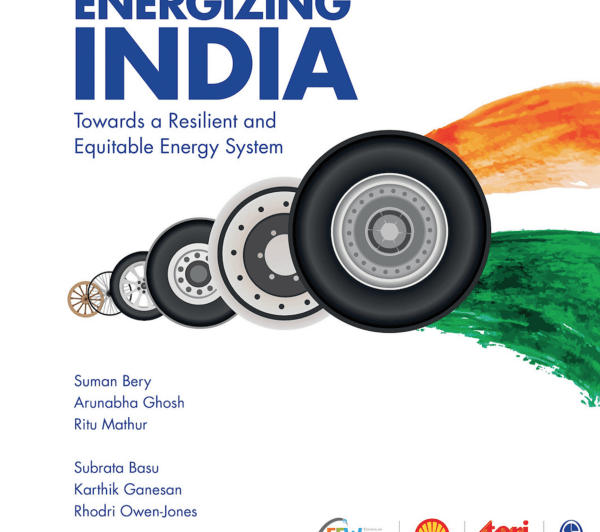Arunabha Ghosh, the CEO of leading research institute Council on Energy, Environment and Water (CEEW), lays out a vision for how to build an inclusive, resilient, sustainable energy future in India that leaves no one behind
In a discussion with Power for All, the co-author of the recently published Energizing India: Towards a Resilient and Equitable Energy System, says that India needs to fully recognize that energy is bigger than just an infrastructure issue, but one of development that can stunt India’s growth unless addressed correctly by ensuring financial and environmental sustainability. Within that broader framework, India is going through four energy transitions: 1. from traditional to modern sources of energy, 2. from rural to urban demand, 3. from regional to global player and 4. from growth to sustainable growth.
“These four transitions are inevitable for India, but the strategies to deal with them are not decided,” Ghosh said. “Will it be done in a strategic, thought-out way, or in an ad hoc, incremental or accidental way? How do we tackle energy infrastructure growth through a critical understanding of these transitions?”
Ghosh notes that India has started the process of internalizing the energy transition earlier than other countries, but this does not mean it can “have people continue to wait and have modern energy reach them by luck.”
And that is where decentralized renewables must come in.
“If India wants an energy system that delivers for all, it has to be resilient to growth needs, climate-friendly and financially sustainable. If we work backward from that, it’s not whether there’s a role or not for decentralized solutions, but what is the role? That is what we have not yet fully internalized.”
As Ghosh notes, India’s legacy infrastructure is based on moving electrons long distances from sources of fossil fuels to consumers, but that is inherently inefficient and prone to significant loss. Renewable energy, by contrast, is far more diffuse and distributed. It also is a hedge against system-wide threats that an integrated grid may face from natural or cyber threats.
“So why would I want to replicate the system that ensures I lose much of the power generated, while I can be more efficient capturing renewable energy?,” he asks. “Even to the extent that centralized infrastructure has received a lot of investment and has a role in meeting large infrastructure needs, there will be a limit of economic feasibility for doing more, so decentralized becomes the default option.”
India needs to start thinking of distributed energy not just as delivery of electricity but delivery of services, since 300 million rural Indians still lack access not only to quality power, but the services that access to last-mile connectivity enable. In such a scenario, decentralized energy becomes a complement to centralized infrastructure.
But Ghosh says that distributed solutions are “still perceived at the margins” by government, and he outlines several steps to move beyond that.
-
Showcasing successes and failures to a much wider audience. “We should be discussing India’s energy revolution: what is going right and wrong?”
-
Beginning a serious national conversation about what is the governance and institutional framework that will be future-ready for India. “Only then will we see a role for distributed renewables that is not being considered yet.”
-
On the back of that conversation, identifying the personnel and finance needed to change governance, which will allow a distributed utility to have an enforceable business contract for delivering last-mile, resilient solutions.
“There is only a very small subset of folks talking about that right now. We need to go well beyond that,” Ghosh concludes.
